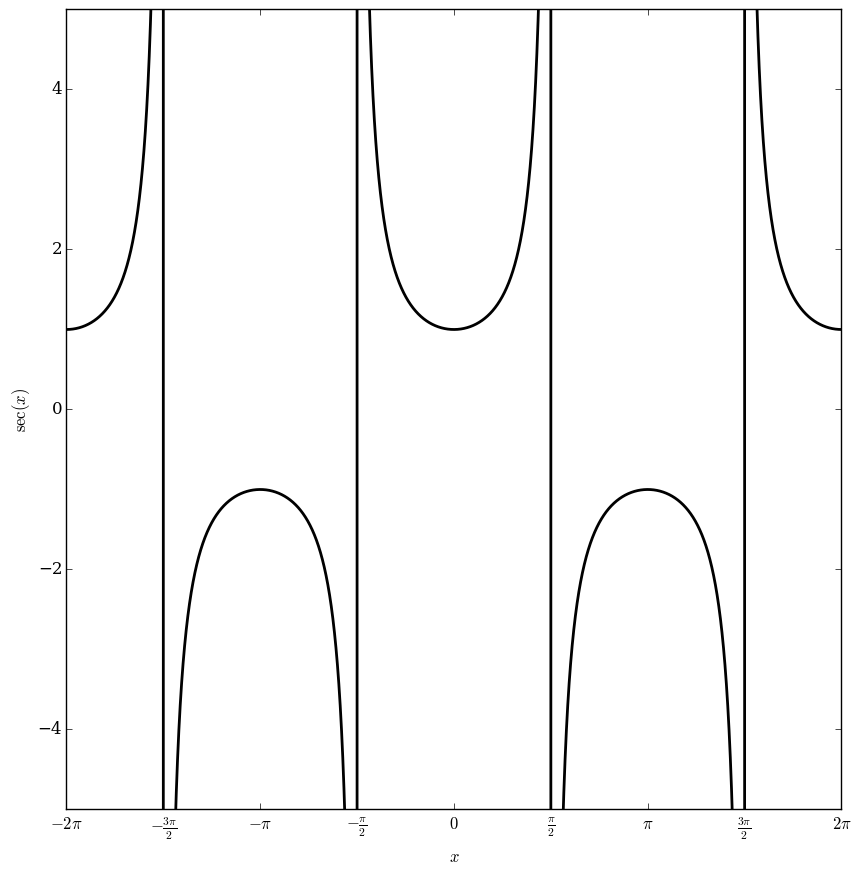Secant
The secant function is defined by $$\sec(z)=\dfrac{1}{\cos(z)}.$$
- Secant.png
Graph of $\sec$ on $\mathbb{R}$.
Domain coloring of $\sec$.
Contents
Properties
Theorem
The following formula holds: $$\dfrac{\mathrm{d}}{\mathrm{d}z} \sec(z)=\tan(z)\sec(z),$$ where $\sec$ denotes the secant and $\cot$ denotes the cotangent.
Proof
From the definition of secant, $$\sec(z) = \dfrac{1}{\cos(z)},$$ and so using the quotient rule, the derivative of cosine, and the definition of tangent, $$\dfrac{\mathrm{d}}{\mathrm{d}z} \sec(z) = \dfrac{\mathrm{d}}{\mathrm{d}z} \dfrac{1}{\cos(z)} = \dfrac{\sin(z)}{\cos^2(z)}=\tan(z)\sec(z),$$ as was to be shown. $\blacksquare$
References
- 1964: Milton Abramowitz and Irene A. Stegun: Handbook of mathematical functions ... (previous) ... (next): $4.3.109$
Theorem
The following formula holds: $$\sec(\mathrm{gd}(x))=\cosh(x),$$ where $\sec$ denotes the secant, $\mathrm{gd}$ denotes the Gudermannian, and $\cosh$ denotes the hyperbolic cosine.
Proof
References
Theorem
The following formula holds: $$\cosh(\mathrm{gd}^{-1}(x))=\sec(x),$$ where $\cosh$ is the hyperbolic cosine, $\mathrm{gd}^{-1}$ is the inverse Gudermannian, and $\sec$ is the secant.
